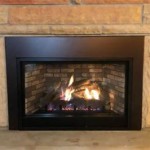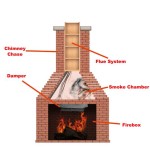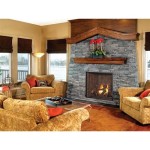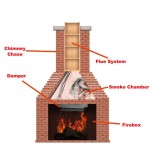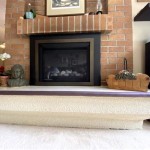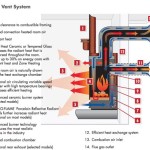Wood Burning Gas Fireplace Insert: A Comprehensive Guide
A wood-burning gas fireplace insert represents a hybrid heating appliance designed to enhance the efficiency and convenience of existing masonry fireplaces. It essentially combines the visual appeal and ambiance of a traditional wood-burning fire with the ease of use and control afforded by gas fuel. This article provides a detailed examination of wood-burning gas fireplace inserts, exploring their functionality, benefits, installation considerations, and maintenance requirements.
Traditional masonry fireplaces, while aesthetically pleasing, are often inefficient heating sources. A significant portion of the heat generated escapes up the chimney due to a lack of proper insulation and uncontrolled airflow. This leads to heat loss and higher energy bills. Wood-burning gas fireplace inserts address this inefficiency by creating a sealed combustion chamber within the existing fireplace opening. The insert itself is typically constructed of steel or cast iron, materials known for their durability and heat retention capabilities.
The core functionality revolves around burning natural gas or propane to produce flames that mimic the appearance of a wood fire. Ceramic logs, often meticulously crafted to resemble real wood, are strategically placed within the insert's firebox to enhance the visual authenticity. The flames radiate heat into the room, and the sealed design minimizes heat loss up the chimney. Blowers, often included as standard or optional features, further enhance heat distribution by circulating warm air into the living space.
The control mechanisms for wood-burning gas fireplace inserts are generally straightforward. Most models feature a simple on/off switch or a more sophisticated remote control that allows for flame height adjustment and temperature regulation. Some inserts also incorporate thermostats, which enable precise temperature control and automated operation. The fuel source, whether natural gas or propane, is connected to the insert via a gas line, and the unit requires an electrical connection to power the blower and control system.
Key Benefits of Wood Burning Gas Fireplace Inserts
Wood-burning gas fireplace inserts offer a multitude of advantages over traditional masonry fireplaces and even some conventional gas fireplaces. These benefits contribute to increased energy efficiency, enhanced convenience, and improved safety.
Improved Energy Efficiency: One of the most significant benefits is the substantial improvement in energy efficiency. Traditional fireplaces often have efficiency ratings of 10% or less, meaning that the vast majority of the heat produced is lost up the chimney. Wood-burning gas fireplace inserts, on the other hand, commonly achieve efficiency ratings of 70% to 80% or even higher. This dramatic increase in efficiency translates directly into lower heating costs and reduced energy consumption. The sealed combustion chamber and insulated design minimize heat loss, allowing the insert to effectively heat the room. The integrated blower system further enhances efficiency by circulating warm air throughout the space.
Enhanced Convenience and Ease of Use: Compared to traditional wood-burning fireplaces, gas inserts offer unparalleled convenience. There is no need to chop, stack, and haul firewood. The hassle of starting and maintaining a wood fire is eliminated. With a simple flip of a switch or press of a button on a remote control, the fire ignites instantly. Flame height and temperature can be easily adjusted to suit personal preferences. The automated operation and thermostat control further enhance convenience by allowing the insert to maintain a consistent temperature without manual intervention. Clean-up is also considerably easier, as there is no ash or soot to deal with.
Increased Safety: Wood-burning gas fireplace inserts enhance safety compared to traditional fireplaces. The sealed combustion chamber prevents the escape of harmful gases, such as carbon monoxide, into the living space. The controlled burning process minimizes the risk of sparks and embers escaping from the firebox, reducing the potential for fire hazards. Many inserts are equipped with safety shut-off mechanisms that automatically extinguish the flame in the event of a malfunction or power outage. These safety features provide peace of mind and contribute to a safer home environment.
Installation Considerations
The installation of a wood-burning gas fireplace insert is a crucial aspect that directly impacts its performance, safety, and longevity. It is highly recommended that installation be performed by a qualified and licensed professional who possesses the necessary expertise and experience. Improper installation can lead to safety hazards, reduced efficiency, and potential damage to the insert and the surrounding structure.
Chimney Inspection and Preparation: Before installing the insert, a thorough inspection of the existing chimney is essential. The chimney must be structurally sound, free of obstructions, and properly sized to accommodate the insert's venting requirements. Any cracks, leaks, or other damage must be repaired before proceeding with the installation. In some cases, it may be necessary to reline the chimney with a stainless steel liner to ensure proper venting and prevent corrosion. The liner is typically sized to match the insert's flue outlet diameter.
Gas Line Connection: Connecting the insert to a gas line requires careful attention and adherence to local building codes and safety regulations. A qualified gas fitter should handle this aspect of the installation. The gas line must be properly sized and installed to provide an adequate supply of gas to the insert. Leak testing is crucial to ensure that all connections are secure and leak-free. A shut-off valve should be installed in an easily accessible location to allow for quick and convenient gas supply interruption in case of emergency or maintenance.
Insert Placement and Securing: The insert must be carefully positioned within the existing fireplace opening and securely fastened in place. The surrounding area must be properly insulated to prevent heat loss and protect combustible materials. Adequate clearances must be maintained between the insert and any nearby walls, mantels, or other flammable objects. The manufacturer's instructions provide specific guidelines for placement, clearances, and insulation requirements.
Electrical Connection: The insert requires an electrical connection to power the blower, control system, and any other electrical components. A qualified electrician should handle this aspect of the installation. The electrical wiring must be properly sized and installed to meet the insert's power requirements. A dedicated circuit breaker is recommended to protect the insert and the electrical system. Grounding is essential to ensure electrical safety and prevent shocks.
Maintenance and Troubleshooting
Regular maintenance is essential to ensure the continued performance, efficiency, and safety of a wood-burning gas fireplace insert. Proper maintenance helps prevent problems, prolongs the insert's lifespan, and ensures optimal heating performance. Routine inspections and cleaning are key components of a comprehensive maintenance program.
Regular Cleaning: Periodic cleaning of the insert's firebox, ceramic logs, and glass door is necessary to remove accumulated soot, dust, and debris. The frequency of cleaning depends on the frequency of use and the type of fuel burned. A soft brush or vacuum cleaner can be used to remove loose debris from the firebox and logs. The glass door can be cleaned with a specialized glass cleaner designed for fireplaces. Avoid using abrasive cleaners, as they can scratch the glass. Before cleaning, ensure that the insert is completely cool and the gas supply is turned off.
Chimney Inspection and Cleaning: The chimney should be inspected and cleaned annually by a qualified chimney sweep. This helps prevent the buildup of creosote, a highly flammable substance that can pose a fire hazard. The chimney sweep will inspect the chimney for cracks, leaks, and other damage, and remove any accumulated debris. Regular chimney cleaning is crucial for maintaining safe and efficient venting.
Pilot Light and Burner Maintenance: The pilot light and burner assembly should be inspected periodically to ensure proper operation. The pilot light should be clean and burning with a steady blue flame. If the pilot light is weak, flickering, or difficult to ignite, it may need to be cleaned or adjusted. The burner assembly should be free of obstructions and properly aligned. If the flames are uneven, yellow, or sooty, it may indicate a burner problem that requires professional attention.
Troubleshooting Common Issues: Several common issues can arise with wood-burning gas fireplace inserts. If the insert fails to ignite, check the gas supply, pilot light, and ignition system. If the flames are weak or uneven, check the burner assembly and gas pressure. If the blower is not working, check the power supply and blower motor. If the insert is producing unusual noises, inspect the blower, burner, and venting system. In most cases, minor problems can be resolved with simple troubleshooting steps. However, if the problem persists or is complex, it is best to consult a qualified technician for assistance.
In conclusion, a wood-burning gas fireplace insert offers a compelling combination of aesthetics, efficiency, and convenience. By understanding its functionality, benefits, installation considerations, and maintenance requirements, homeowners can effectively utilize this appliance to enhance their home heating system and create a comfortable and inviting living space.

Convert To Gas Installing Fireplace Inserts Doctor Flue

Fireplace Insert Guide Fireplaces Direct Learning Center

A Step By Guide To Understanding Fireplace Inserts

Gas Fireplace Insert Vs Wood Burning Installation
How To Install Gas Fireplace Insert Heat Glo

Fireplaces Inserts Wood Gas Fireplace Xtrordinair

Nordik 34i Kozy Heat Fireplaces

Gas Fireplace Inserts Are Incredibly Easy To Use And Offer A Clean Burning Convenient Alternative Heating Insert

Why Get A Fireplace Insert Wood Gas Inserts In Tn Al

Timberwolf Tdi3n Gas Burning Fireplace Insert
Related Posts


